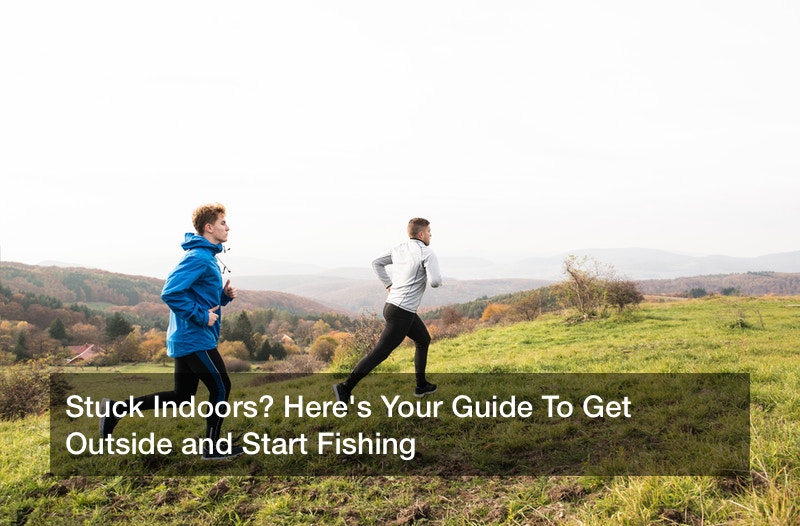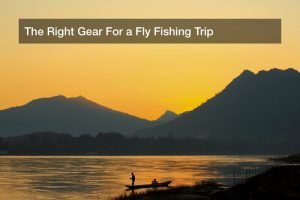
We are a society that spends far too much time indoors — roughly 93% of our lives in fact, according to the EPA. That breaks down as 87% of our time inside buildings and 6% in cars — only 7% of our time is spent in an outdoor setting. Numerous studies on the matter report that the physical and mental health implications of this ratio are quite dire.
In terms of physical well-being, there are several factors related to time spent indoors that tend to lead to negative outcomes. One of the main contributors is indoor air pollution, which is generally much higher than outdoor levels. The EPA lists some of the most common indoor pollutants, which include:
- VOCs: VOCs, which stands for volatile organic compounds, are a category of chemicals which off-gas from a number of common products. Everything from wood varnishes and preservatives to air fresheners releases VOCs which can linger in your air and enter your body. If you just had a room painted, clothing dry-cleaned, or furniture restored, make sure to keep your windows open as often as possible to reduce exposure to these compounds.
- Mold and mildew: These troublesome microorganisms are guests in many a home. They typically appear in parts of the home with particularly high levels of moisture. This means that bathrooms, basements, even kitchens that are not properly ventilated and/or dehumidified can easily become breeding grounds unwanted microorganisms. While mold and mildew may seem unsightly but innocuous, they can actually have a serious impact on your health. Common symptoms of exposure include congestion, a cough or wheeze, and eye injury through irritation, and irritation or the skin and throat.
- Radon: The EPA estimates that one in 15 homes has a radon level which exceeds the recommended limit of 4 pCi/L. Radon tends to cause respiratory issues, so if you have been experiencing an unexplained cough, chest tightness, chest pain, difficulty swallowing, or shortness of breath, you should get a radon test immediately. Behind cigarette smoking, radon in the home is the highest contributor to cases of lung cancer in the U.S. Its presence is responsible for roughly 12% of all lung cancer cases nationwide. Fortunately, radon mitigation services can help to keep your exposure at a safe level.
- Carbon monoxide: There are an alarming number of appliances in and around the home that release carbon monoxide as a toxic byproduct. Heat-producing devices such as furnaces, boilers, fireplaces, ovens, stoves, and water heaters all release carbon monoxide during operation. Outside, your car, truck, motorcycle, lawn mower, power tools, and grill all release carbon monoxide which can infiltrate the home as well. The CDC describes the symptoms of excessive carbon monoxide exposure as follows:
“The most common symptoms of CO poisoning are headache, dizziness, weakness, upset stomach, vomiting, chest pain, and confusion. CO symptoms are often described as “flu-like.” If you breathe in a lot of CO it can make you pass out or kill you. People who are sleeping or drunk can die from CO poisoning before they have symptoms.”
Aside from efforts to mitigate the sources of indoor air pollution, there is one simple, easy step to reduce your exposure and improve your health: spend more time outdoors. If you’ve been looking for an activity to get you out of the house and into nature, you need to start fishing. Whether you’re young or old, able-bodied or living with a disability, fishing is one of the more accessible activities out there that many can enjoy.
What Do You Need To Start Fishing?
Of course, if you have never fished before, you may not be aware of all the supplies you need to start fishing. While most of these items are rather self-evident, there are some you may not think to get if you’re brand new to the sport. Read through this comprehensive list of everything you need to start fishing to make sure you go into your next fishing venture fully prepared.
A Fishing License
Wherever you live, a license is something you’ll need to start fishing given you are above a certain age. These licenses can typically be purchased online, though many physical locations such as Walmart offer them as well. Typically you’ll need to go into the process equipped with a proof of residency, often in form of a driver’s license, and a debit or credit card for payment.
The precise requirements and regulations when it comes to getting and using your fishing license vary by state. You can check your state’s exact rules here to take the guesswork out of the process. New York, for example, requires anyone above the age of 15 to get a license before they can legally cast a line, while Nevada doesn’t allow anyone older than 12 to fish without a license.
A Fishing Rod!

This should come as a surprise to no one. One of the things sets of equipment you need to start fishing — unless you’re planning on going spearfishing, in which case you’ll need a whole different set of supplies — is a fishing rod and reel. If you’ve never had any exposure to the world of fishing, you may be surprised to learn that there are a variety of rods to choose from. If you’re planning on going fly fishing — a style which uses a heavier string to propel the hook — you’ll have to choose from one of the following types:
- The streamer rod
If you need to start fishing for bass, you’re most likely going to want to get a streamer rod. These heavy-duty rods can handle the big and densely weighted flies that you’ll want to go after larger species, such as carp, pike, and bass. These rods typically measure at about 9 feet in length, and are often made of tougher metals and resins to withstand the wear and tear associated with flinging heavy flies long distances. - The nymphing rod
These rods are generally 9 feet in length, the same as your typical steamer rod. These rods are used with a conglomeration of weighted flies, line weights, and and a strike indicator, a set which is together referred to as a nymph rig. This setup makes traditional casting strokes unnecessary; instead, anyone fishing with a nymphing rod is meant to rely on roll casts. Nymphing rods are usually made with significant strength and stiffness to handle the heavy lures and line weights, but they can be used with smaller dry flies and streamers as well, making them a very flexible option appropriate for a wide variety of angling situations. - The dry fly rod
This is the type of rod most fly fishers start off with. They are typically made shorter and lighter than the previous rod types, going from 8 1/2 feet all the way down to 6 feet for the times when you want to fish in smaller streams. When dry angling in a small stream, you’re going to want a dry fly rod that is classified as a 2 weight or 3 weight. - The saltwater fly rod
If you have never gone fly fishing before, you’re not going to want to start your journey angling in the ocean. This is an extremely challenging environment for fly fishing, requiring extensive knowledge and experience. It is both physically demanding and taxing to your equipment, as the salt can corrode the metal on your rod and reel unless it has been specially treated. Some models come with titanium components and anodized surfaces to ensure that they survive the harsh saltwater conditions. These long, stiff rods are made to use high-density weighted flies that can cut through powerful shoreline winds.
Fishing Apparel
Out on the shore or in a boat, there is no air conditioning you can switch on when the sun is beating down and the weather gets too hot. Thus, the clothing you’ll need to start fishing should have the following features:
- Breathability, to ensure that you have adequate airflow and don’t overheat. You want your sweat to evaporate and get wicked away, so you can experience its cooling effects and have your clothing stay dry.
- Full cover, so that no parts of your body are exposed while you’re out fishing. By allowing some of your skin to remain uncovered, you risk personal injury in the form of sunburn and the potential development of melanomas due to prolonged exposure to UV radiation. You’ll want to wear long sleeves and wide-brimmed fishing hats to stay covered while out in the elements.
- Camouflage, to avoid scaring away the fish that you’re trying to catch. It may come as a surprise that fish can see beyond the surface of the water and actually spot you, but indeed this is often the case. Due to an effect known as Snell’s Window, fish have a 180 degree view of the world beyond the water which is compressed into a 97.2 degree cone. While objects by the perimeter of this cone will be distorted, bright colors will still stand out considerably. This is why it’s important to stick to natural tones and patterns when fishing.
- Quick-drying, for obvious reasons. When you’re out fishing, particularly if you’re in a boat, there’s a strong chance that you’re going to get wet. You want clothes that will dry as quickly as possible so you don’t have to deal with chafing and discomfort.
A good pair of polarized sunglasses is also highly recommended for any fishing venture. Not only do they protect your eyes from damage by harmful UV rays, they also make it easier to see what is going on in the water. Polarized lenses are able to cut through much of the annoying glare on the water’s surface, though they are less effective on cloudy days when the rays are more scattered and diffuse.
Fishing Line
Most fishing rods and reels come with enough fishing line to get you started. However, you’d be surprised at how quickly you can go through a spool of line. Lines commonly break during an angling session — they can be broken by large fish, get caught on branches and other detritus in the water, or simply get twisted and tangled over the course of the day.
Tackle Box Supplies
If you’re going to go fishing, you or someone in your party is going to need to bring a tackle box. A tackle box is essentially a storage unit for holding all the smaller components that you need for a day of fishing. When putting together your tackle box, you’re going to want the following supplies:
An assortment of hooks
New fishers might have the notion that hooks are pretty much one size fits all. In reality, you need a diversity of hook sizes and styles in your arsenal. While a basic single hook will suit most beginners, those looking to try out some more advanced approaches should look into double, treble, and circle hooks.
Effective bait

While more experienced anglers can find success with other methods, most beginners need to start fishing with live bait in order to get a catch. Live baits such as minnows or worms can be a huge asset to novices who are determined to get a catch. Those who are trying to save money can collect their own worms from the ground, or use baits of food such as compacted bread or corn.
Fishing with lures has the benefit of saving you money over time; while a high-quality lure might set you back a little, you can use it over and over again. The best method is to buy multiple lures and experiment to see which ones are most effective. Because these replica baits might not be as easy to use as live bait, they are a great way to push your fishing ability to the next level.
Bobbers and weights
These two items you need to start fishing are a fixture of anyone’s tackle box. Bobbers do what it sounds like they do: they bob on the surface of the water to keep your bait from sinking deeper than you’d like. You can often tell if you have gotten a bit on your line by monitoring the movement of your bobber.
Weights, often referred to as sinkers, are small metal devices you can attach near the end of your line. They make it easier to cast your line a greater distance, and keep your hook at your desired depth in the water.
In Conclusion
While boat clubs are perfect for days you want to get out on the water, you can start fishing before you join one. Many piers, decks, or banks by a pond or a stream make for perfect fishing spots. The most important step is just getting out there and enjoying yourself. If you’re having a hard time getting a catch, remember to simply be thankful for the opportunity to be outside. Keep trying, and eventually your skill will grow.





